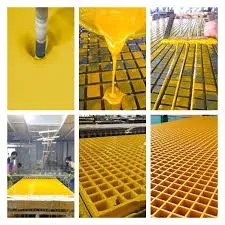
-
 Afrikaans
Afrikaans -
 Albanian
Albanian -
 Amharic
Amharic -
 Arabic
Arabic -
 Armenian
Armenian -
 Azerbaijani
Azerbaijani -
 Basque
Basque -
 Belarusian
Belarusian -
 Bengali
Bengali -
 Bosnian
Bosnian -
 Bulgarian
Bulgarian -
 Catalan
Catalan -
 Cebuano
Cebuano -
 China
China -
 China (Taiwan)
China (Taiwan) -
 Corsican
Corsican -
 Croatian
Croatian -
 Czech
Czech -
 Danish
Danish -
 Dutch
Dutch -
 English
English -
 Esperanto
Esperanto -
 Estonian
Estonian -
 Finnish
Finnish -
 French
French -
 Frisian
Frisian -
 Galician
Galician -
 Georgian
Georgian -
 German
German -
 Greek
Greek -
 Gujarati
Gujarati -
 Haitian Creole
Haitian Creole -
 hausa
hausa -
 hawaiian
hawaiian -
 Hebrew
Hebrew -
 Hindi
Hindi -
 Miao
Miao -
 Hungarian
Hungarian -
 Icelandic
Icelandic -
 igbo
igbo -
 Indonesian
Indonesian -
 irish
irish -
 Italian
Italian -
 Japanese
Japanese -
 Javanese
Javanese -
 Kannada
Kannada -
 kazakh
kazakh -
 Khmer
Khmer -
 Rwandese
Rwandese -
 Korean
Korean -
 Kurdish
Kurdish -
 Kyrgyz
Kyrgyz -
 Lao
Lao -
 Latin
Latin -
 Latvian
Latvian -
 Lithuanian
Lithuanian -
 Luxembourgish
Luxembourgish -
 Macedonian
Macedonian -
 Malgashi
Malgashi -
 Malay
Malay -
 Malayalam
Malayalam -
 Maltese
Maltese -
 Maori
Maori -
 Marathi
Marathi -
 Mongolian
Mongolian -
 Myanmar
Myanmar -
 Nepali
Nepali -
 Norwegian
Norwegian -
 Norwegian
Norwegian -
 Occitan
Occitan -
 Pashto
Pashto -
 Persian
Persian -
 Polish
Polish -
 Portuguese
Portuguese -
 Punjabi
Punjabi -
 Romanian
Romanian -
 Russian
Russian -
 Samoan
Samoan -
 Scottish Gaelic
Scottish Gaelic -
 Serbian
Serbian -
 Sesotho
Sesotho -
 Shona
Shona -
 Sindhi
Sindhi -
 Sinhala
Sinhala -
 Slovak
Slovak -
 Slovenian
Slovenian -
 Somali
Somali -
 Spanish
Spanish -
 Sundanese
Sundanese -
 Swahili
Swahili -
 Swedish
Swedish -
 Tagalog
Tagalog -
 Tajik
Tajik -
 Tamil
Tamil -
 Tatar
Tatar -
 Telugu
Telugu -
 Thai
Thai -
 Turkish
Turkish -
 Turkmen
Turkmen -
 Ukrainian
Ukrainian -
 Urdu
Urdu -
 Uighur
Uighur -
 Uzbek
Uzbek -
 Vietnamese
Vietnamese -
 Welsh
Welsh -
 Bantu
Bantu -
 Yiddish
Yiddish -
 Yoruba
Yoruba -
 Zulu
Zulu
frp field tank
Understanding FRP Field Tanks A Comprehensive Overview
FRP (Fiber Reinforced Polymer) field tanks have emerged as a significant innovation in the storage and management of various fluids across diverse industries. The unique combination of strength, durability, and lightweight properties inherent in FRP materials make these tanks an optimal choice for applications ranging from water storage to chemical containment.
What are FRP Field Tanks?
FRP field tanks are storage tanks constructed from a composite material consisting of a polymer matrix reinforced with fibers, typically glass or carbon. This advanced material technology allows for exceptional resistance to corrosion, temperature extremes, and mechanical stress, enabling these tanks to maintain integrity over prolonged usage periods. Unlike traditional materials such as steel or concrete, FRP offers a lightweight alternative that significantly reduces transportation and installation costs.
Key Advantages of FRP Field Tanks
1. Corrosion Resistance One of the primary benefits of FRP is its superior resistance to corrosion. In environments where tanks are exposed to aggressive chemicals or harsh weather conditions, FRP tanks perform exceptionally well, thus minimizing maintenance and replacement costs often associated with corroded tanks.
2. Lightweight and Flexible Design FRP tanks are significantly lighter than their metal or concrete counterparts, which facilitates easier handling, transport, and installation. Their lightweight nature also reduces the structural support requirements, allowing for more versatility in placement and installation.
frp field tank

3. Durability and Longevity FRP’s durability is well-documented, making it ideal for long-term applications. With proper maintenance, these tanks can last decades without significant degradation, offering businesses a reliable solution for their storage needs.
4. Customizable Sizes and Shapes FRP manufacturing processes allow for a high degree of customization, meaning tanks can be produced in various sizes and shapes to meet specific customer requirements. This flexibility is particularly beneficial for projects with unique space or capacity constraints.
5. Environmental Impact The production and use of FRP materials can be made more environmentally friendly. Often, manufacturers are able to utilize recycled materials in the production process. Moreover, the longevity and durability of FRP tanks contribute to a reduced environmental footprint over time.
Applications of FRP Field Tanks
FRP field tanks find application across a multitude of sectors. They are commonly used in water treatment facilities, where safe storage of water is critical. Additionally, the oil and gas industry benefits from FRP tanks for storing fuels and chemicals, while agricultural sectors utilize them for irrigation and fertilizer storage. Their non-reactive nature ensures that the integrity of stored materials is maintained, preventing contamination.
Conclusion
As industries continue to evolve and emphasize efficiency, sustainability, and cost-effectiveness, FRP field tanks stand out as a top choice for fluid storage solutions. Their unique combination of properties not only addresses the challenges faced by traditional materials but also offers an innovative pathway towards future advancements in storage technology. As businesses and organizations look to optimize their operational capacities while adhering to environmental standards, the adoption of FRP technology is expected to gain momentum, solidifying FRP field tanks as a cornerstone in fluid management systems. Whether in industrial, agricultural, or municipal settings, the relevance and application of FRP field tanks will continue to expand, driving progress and innovation across various fields.









